

 MARK HOLLAND looks at three different methods to lay ballast.
MARK HOLLAND looks at three different methods to lay ballast.
One of the most common things that we get asked is how to achieve realistic ballasting. This happens more regularly at this time of year as people are getting around to properly lay their Christmas presents of train sets or track extension packs. Many people see the ballasting on exhibition layouts or in magazines and get a little worried that its some kind of 'dark art' that takes years of practice to achieve. Now it is true that practice makes perfect, but there are a few ways to make the job easier. In this article I will go through a few methods of fixing ballast and leave you to find the way that you find easiest. Be warned; ballasting track is a job best taken slowly and methodically, so don't rush it and the results will be much better. All of these methods are suitable for different scales of track and sizes of ballast.
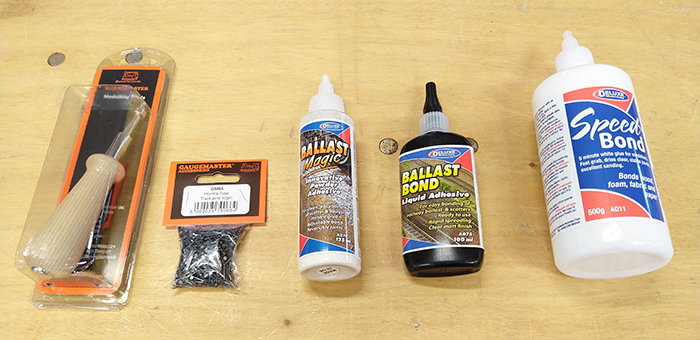
For this demo I have got 3 options for fixing ballast to show you; DLAD-74 Ballast Magic, DLAD-75 Ballast Bond, and DLAD-10/11 Speed Bond, which are all produced by Deluxe Materials. The other two items in the picture are GM66 Track Pins and a GM669 Pin Pusher.
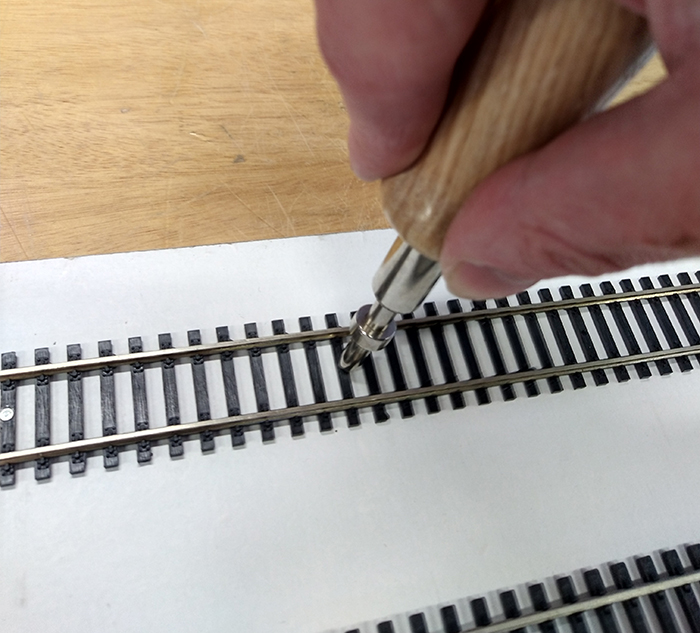
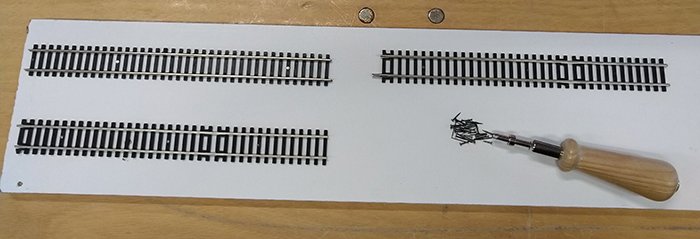
Some scrap track was fixed to a length of white-faced Conti board, just to provide a good contrast for the pictures. The pin pusher is a little device designed to 'fire' pins through the track sleeper holes and into the board and is an easy and quick way of fixing track, but I digress!
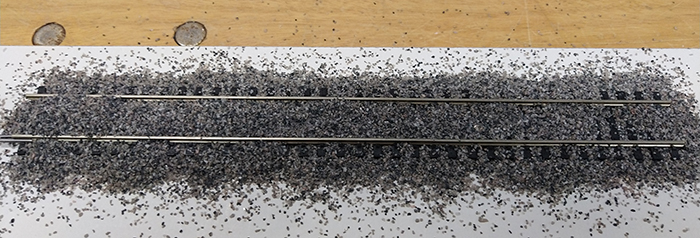
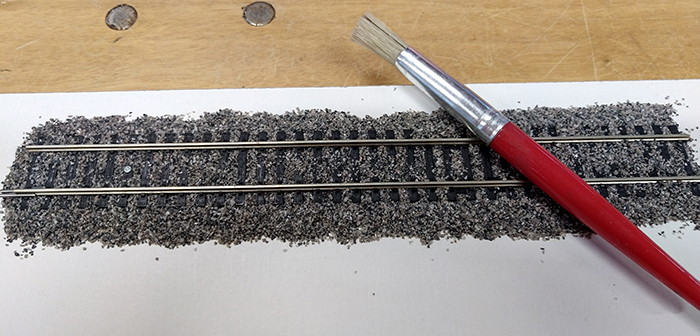
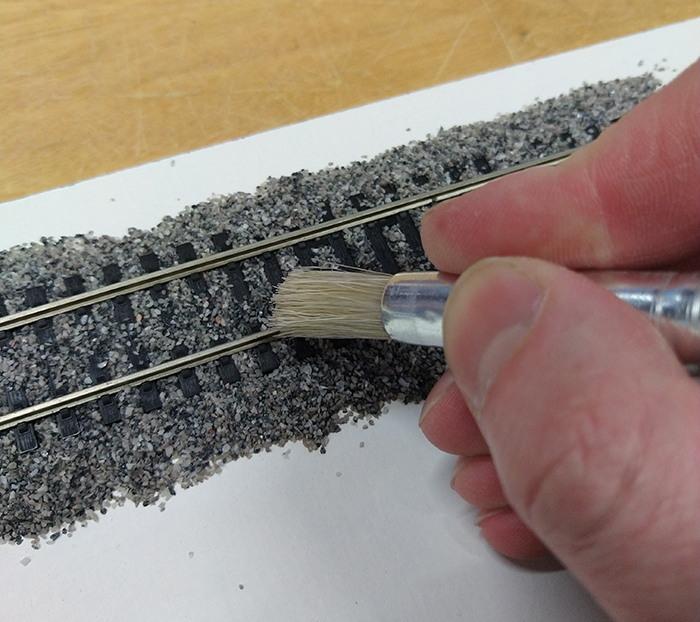
Ballast can be roughly poured into position. You can do this just using the corner of the bag, a spoon, or a use a ballast spreader for the more expensive option. I just poured it from the bag and then using a large stiff brush to spread it out, then positioned and tidied up the ballast until it was where I wanted it. At this point it is a good idea to brush any loose ballast away from the inside of the rail so it doesn't get stuck there in a later stage.
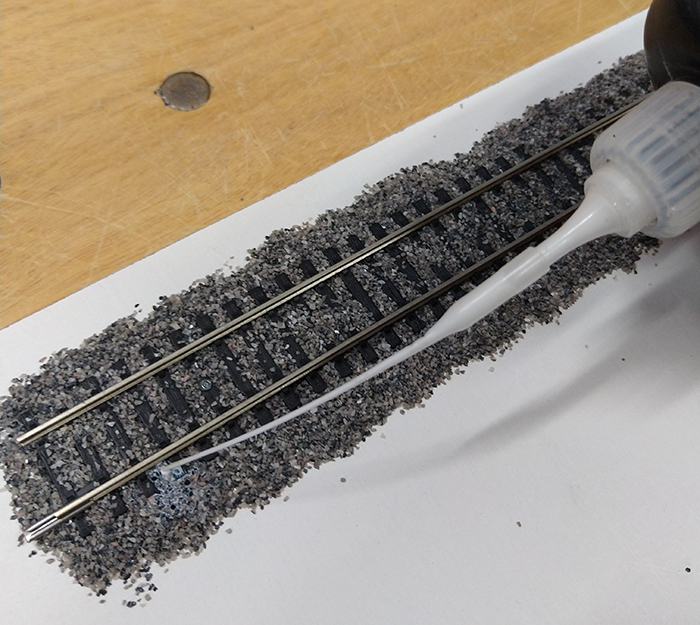
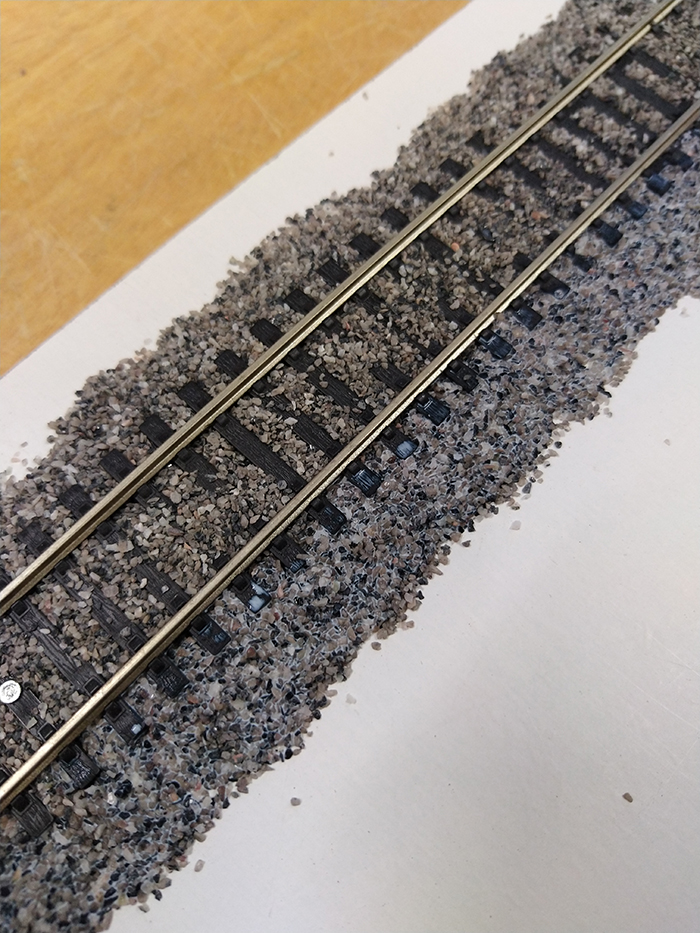
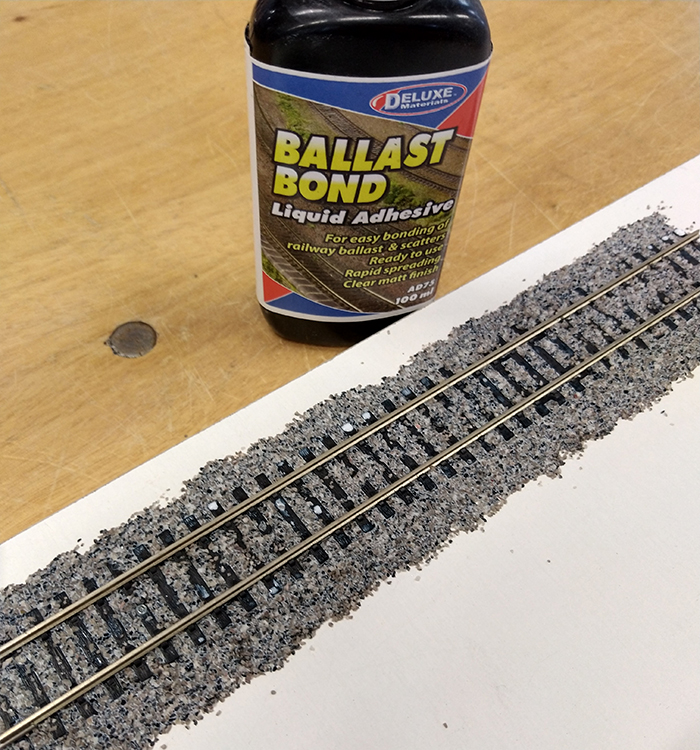
First to demo is Ballast Bond; this is a thin adhesive that flows easily into the ballast. As you can see it is white when wet so you can see where you have already applied it. Ballast Bond flows very easily through the thin nozzle supplied so you just need to tip the bottle up and away you go. You can see the difference between the wet and dry ballast easily, just drop the Ballast Bond on to the ballast until it is fully 'soaked'.
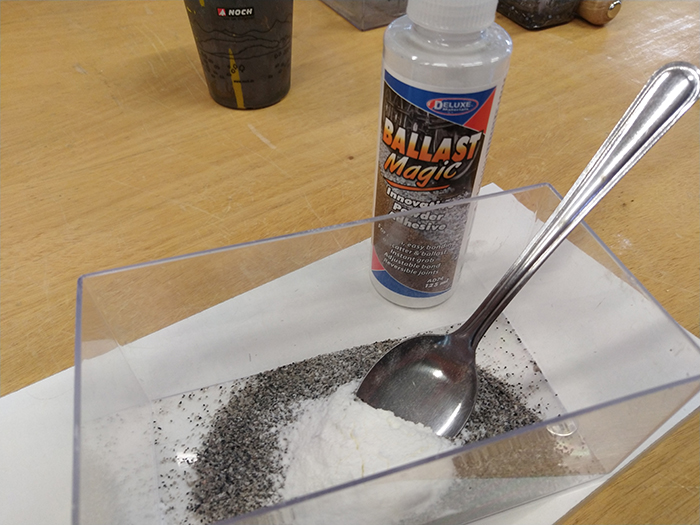
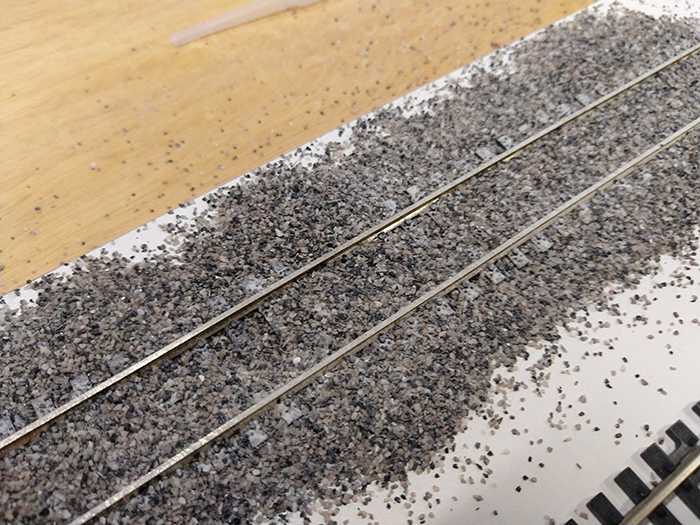
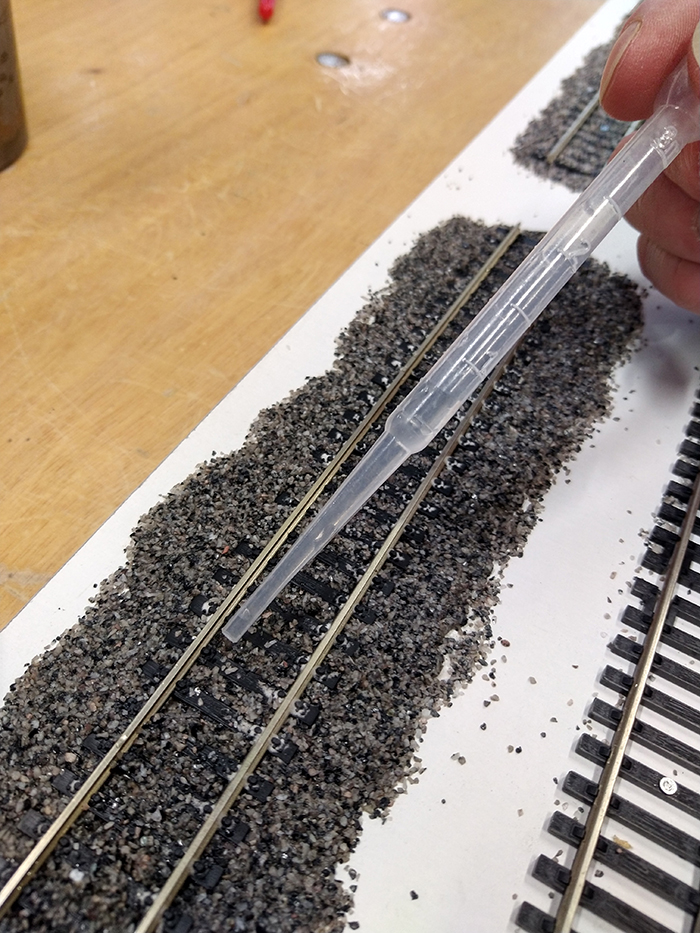
Next up is Ballast Magic. This is a dry powder adhesive that is mixed with the dry ballast before it is put into position. I mixed it together with the dry ballast in the recommended ratio of 7 parts ballast to 1 part Ballast Magic. Just mix it thoroughly in an old margarine/ice cream tub in the volume required; please don't use anything from your kitchen! Once mixed and positioned on the track, you will notice the ballast takes on a white powdery look, this means it is well mixed with the Ballast Magic. Again, brush the ballast into place before dropping on or spraying the ballast with clean water. This activates the Ballast Magic and turns the dry powder into an adhesive. Only a small amount of water is needed so as not to swamp the ballast.
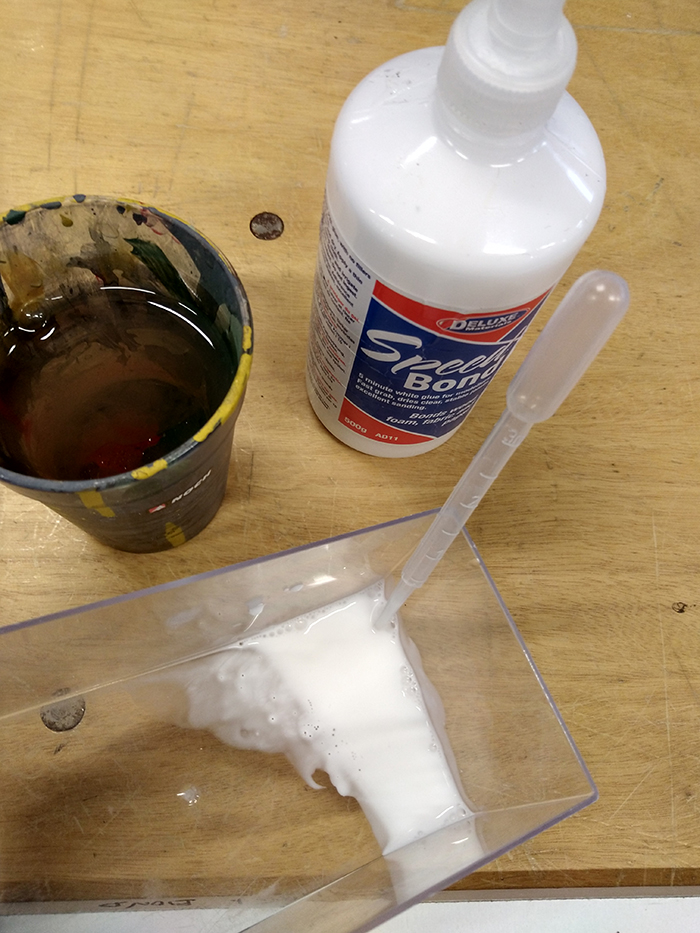
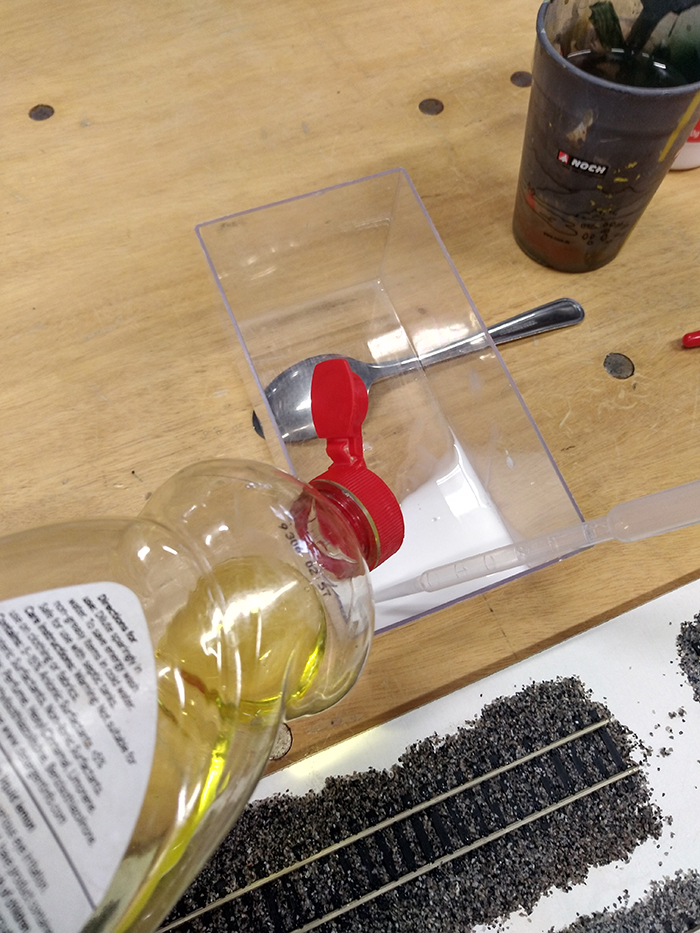
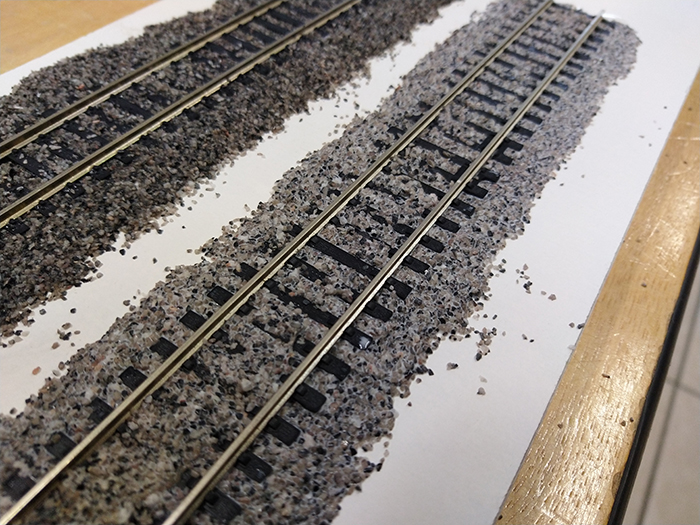
Lastly, we have the 'good old fashioned' way of fixing ballast - watered-down PVA glue. I used Deluxe Materials Speed Bond for this as it is a good quality PVA glue. Start by watering down the Speed Bond until it reaches a milk-like consistency, using clean warm water for this is best. Here is the odd bit - add a SMALL amount of washing up liquid to the watered-down Speed Bond. This breaks down the surface tension of the water/glue mix so it flows around the ballast better when it is applied. Without it, the glue/water mix would just bead and sit on top of the ballast rather than soak in. Apply it with a small dropper, making sure it soaks into all of the ballast. Doing this in small amounts is preferable to mixing up large quantities of water/Speed Bond as the mix may start to dry before you get a chance to apply it.
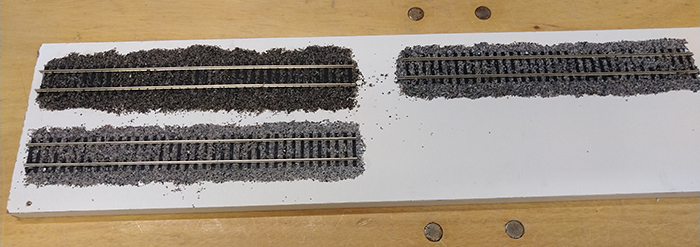
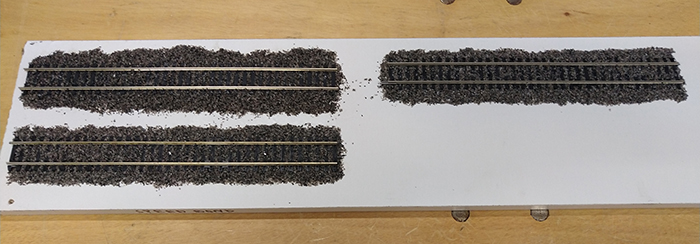
Here are the 3 results. Still wet in the first picture, dry in the second. Top Left: Ballast Magic, Top Right: Ballast Bond and Bottom Left: Speed Bond/water. Once dry you will need to vacuum off any loose ballast and clean the tops and inside of the rails to remove any stuck-on ballast and/or glue. When you vacuum the ballast do it gently but don't be surprised if holes appear where the glue hasn't reached, this is easily solved by just adding small amounts of ballast to the holes and repeating your preferred method of fixing.
As you can see the end results are similar, it's just how much effort and mess you fancy putting up with, although ballasting is never a particularly tidy job to do. My own personal preference is for Ballast Bond as I find it the quickest and easiest of the options to work with but give any or all of them a go and decide on the one you prefer.